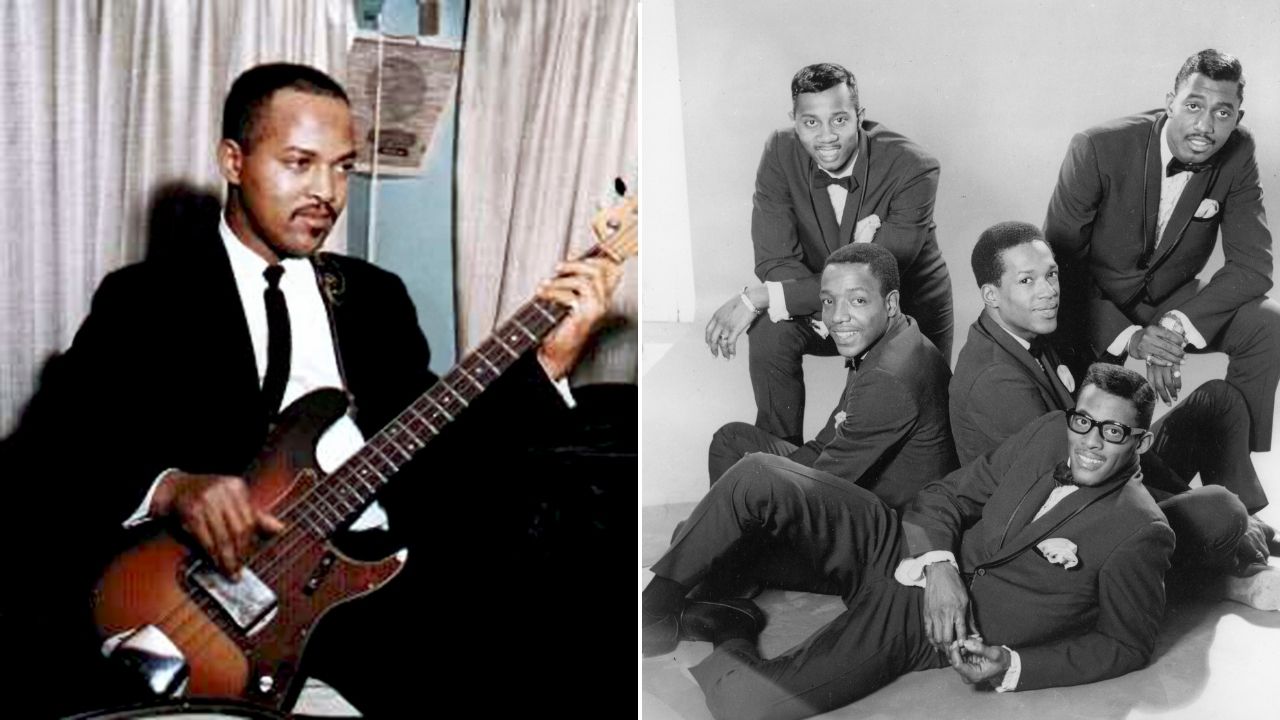Cooking with the Blues: How to Spice Up Your Solos
Add some interesting elements to your playing and give your solos the contrast that will keep your audience listening.

The blues' most common variation is the 12-bar variety. A basic 12-bar blues includes three chords, often referred to by number, which describes where the chord is found by scale degree. These three chords are the I, IV and V. While it is common to "play over the changes" of these chords, in this lesson we'll discuss some basic scales that inform my vocabulary when simply playing over the key center of A dominant 7.
Variety is the spice of life. Musically speaking, I think “spice” translates to a certain amount of dissonance. Dissonance is defined as a tension resulting from the lack of harmony among musical notes.
I’ll take you through a step by step process of using scales that progressively use more and more dissonant notes. It will be this intermingling of consonant and dissonant sounds that will add a lot of interesting elements to your playing and give your solos the contrast that will keep your audience listening.
You can put these ideas to quick use; I’ll be using some basic pentatonic and blues scales that you likely already know, as well as a couple of ideas that might not yet be a part of your vocabulary.
An A7 chord is best described as an A major triad with a minor 7th. This chord is spelled A-C#-E-G. Overall, its tonality is major, but the minor 7th note in the chord lends itself to some minor approaches as well.
The A major pentatonic scale could be considered the most consonant match for this chord, as the scale includes the A major triad. While a little vanilla for some, it works perfectly.

To add a just a little dissonance, the A major blues scale can be used. This scale includes all the “right notes” from the major pentatonic scale but adds a minor 3rd to the mix. The minor 3rd doesn’t stand out too much when played briefly as a passing tone, but if you place some focus on it, it surely will grab the listener’s attention before you resolve it to the next note in the scale. With a jam track, try switching between the major pentatonic scale and the major blues scale.
All the latest guitar news, interviews, lessons, reviews, deals and more, direct to your inbox!

It’s this minor 3rd note that leads us to a very common combo: using the minor pentatonic scale over the dominant 7 chord. The minor pentatonic scale includes the root, 5th and minor 7th of the dominant 7 chord we’re playing over, but the minor 3rd is dissonant when heard against the major 3rd in the chord. It is this dissonance that often leads us to bend the minor third up to the major third pitch, giving us that bluesy sound we love.
I often think of players like Stevie Ray Vaughan, Jimmy Page and Jimi Hendrix when I hear this being played, but since the minor pentatonic scale is one of the first scales guitar students learn, chances are you're already doing this. With a jam track, try switching from the major pentatonic to the major blues—and now the minor pentatonic scale—and back.

If we want to "turn up" the amount of spice even more, we can start to play the minor blues scale over this chord. Not only do we now have that dissonant minor 3rd from the minor pentatonic scale, but now we also have the tritone to bend the listener’s ears even more. If you simply treat the tritone as a passing tone, it might not be too noticeable, but if you focus on that note, you’ll really start getting the listener’s ears to perk up! With a jam track, try switching from the major pentatonic to the major blues, minor pentatonic, minor blues and back. Make a mental note of the overall differences in sound. It's these differences that help you identify the sound of these scales and let you know what to expect when you use them.

As if this weren’t enough to mix things up and make your solos more interesting, I also like to include a few more ideas to achieve that “outside sound” in my solos. The first is what I like to call the “Flatted Root Minor Pentatonic Scale." This scale simply flattens the root (A) in the A minor pentatonic scale. This scale is spelled Ab-C-D-E-G. If there was ever a note to alter to create bit of dissonance, it’s the root! Watch as audience members look up from their smartphones when you lay this scale’s sound on them.

Another easy technique for getting a dissonant “outside” spicy sound is to simply move the minor pentatonic scale up a half step for a brief moment. This "side-stepping" technique works well during scale runs, just move up one fret half way through your phrase and enjoy the dissonance, then move back into key—a little bit of this "spice" goes a long way.
Guitarist Adrian Galysh is a solo artist, session musician, composer and educator. He's the author of Progressive Guitar Warmups and Exercises. Adrian uses SIT Strings, Seymour Duncan pickups and effects, Brian Moore guitars, Voodoo Labs, D'Angelico guitars and Morley pedals. For more information, visit AdrianGalysh.com.
GuitarWorld.com readers can enjoy a FREE five-song EP download by clicking HERE.
